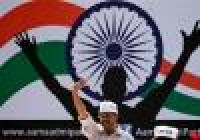Learning media strategy from AAP
The Aam Aadmi Party has given the political class a working model of what media to use for different voters, and indeed, different purposes,
writes SEVANTI NINAN

TALKING MEDIA
Sevanti Ninan
So did social media swing fortunes in the just-concluded assembly elections? The phrase scarcely figured in the long hours of TV discussion on Sunday, or in the many column inches devoted to the election results the next morning. That was one indication of how little it was seen to count. It takes an actual round of polls with stunning results in the country’s heartland to ground the runaway hype.
But an interesting twin phenomenon has emerged. The mainstream parties decided that they had to be seen and heard on social media platforms. And the new party in Delhi, dubbed as the social media-created challengers, decided that it had to learn the more traditional forms of voter outreach. In scripting its terrific 28-seat victory, the Aam Aadmi Party (AAP) has given the political class a working model of what media to use for different voters, and indeed, different purposes.
It had a demographic strategy and an income-group strategy. To reach young first-time voters, it used social media. It was useful for publicizing the voter registration campaigns it ran in institutes of higher education in Delhi. The high voter turnout was partly because of this.
The non-voting classes in Delhi, particularly the youth among them, voted because AAP’s outreach through social media made political participation trendy. Delhi Times carried the fatuous tale of a young thing marking her forefinger with a black marker pen because she hadn’t managed to ensure that her name was on the voting lists, and didn’t want to be left out of the trendy business of putting up a selfie to show she had voted like everybody else in her crowd.
But the short point is that this sort of Facebook, Twitter and Instagram-led social pressure probably increased the youth voter turnout in some classes. Not all were persuaded by such media though. Some youth in the voting queues in Delhi told NDTV, “Yeh sab faltu baat hai (All this is irrelevant).”
AAP’s online coordinators talk of reaching 3.5 million people just before voting day with an app called Thunderclap, which sits on your Facebook page and tells you to go vote. Was it this that did the trick or the dividing of the traditional wards into zones for house-to-house contact and much more intense ground outreach?
AAP experimented with the zone approach in a city whose political parties had not tried it before.
The lower middle class and low-income groups in Delhi reside in unauthorized colonies, resettlement colonies and jhuggi-jhopri clusters. The party’s poll plank talked of regularizing jhuggis, and giving free water and heavily subsidized electricity. Their jharu (broom) posters then were plastered everywhere in these colonies, and on flyovers, and on the backs of autorickshaws. They made good use of out-of-home media. That’s the easy part. Their volunteers also sat with local residents and prepared constituency-level manifestos. That was the imaginative and hard part.
The Anna movement in 2011 may have used social media heavily to drive citizen response to its cause, but a political party needs votes, not followers.
In these elections, the attitude of the conventional political class seemed to be as follows: You do a spot of social media to show that you are with it enough to be on this bandwagon. (Harsh Vardhan reportedly started his Twitter account after being named as the chief ministerial candidate for Delhi.) But you have the good sense to know its limitations. Madhya Pradesh chief minister Shivraj Singh Chouhan tweets, but he also does his padyatras, his havans, and much else. Twitter hashtags do not take you to an increased seat tally in your third term in a state such as Madhya Pradesh.
Politicians and government agencies are being propelled to using social media because of the buzz around it. But the numbers tell a tale of token involvement with these tools. As somebody reported, the Election Commission’s Facebook page has just 130 likes and its Twitter handle has 120 followers. That will doubtless change as it gets going.
Currently, given their inherent marketing skills, it is more likely a case of Facebook and Twitter wanting a piece of the election action, than parties and candidates believing these two will make a difference to their electoral fortunes.
Apart from voter registration, what AAP has effectively used social media and mobile messaging for, this time around, as Srinivasan Jain described in his Truth vs Hype programme on NDTV, was to get the vote out. In the process, it gave the state a record turnout, and itself an impressive debut.
But as yet, social media is not the place where citizens and politicians interact online on issues. Not even in Delhi with its 86% literacy and a per capita income three times the national average. Token presence, two Mumbai researchers studying this election, have found, did not translate into effective usage. That is still in the realm of the future.
Reprinted from Mint, December 13, 2013